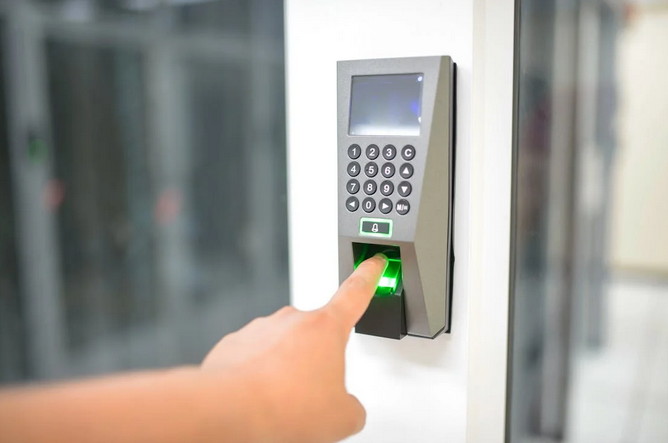In a world where convenience meets cutting-edge technology, the way we safeguard our identities and assets is undergoing a seismic shift. Gone are the days of fumbling for keys or remembering complex passwords—biometric security has emerged as the vanguard of personal and digital protection. From fingerprint scanners to facial recognition systems, these innovative methods are not just futuristic fantasies; they’re reshaping our everyday lives right now. Join us as we explore how biometric security is outpacing traditional methods, transforming everything from banking to home security, and ensuring that your most sensitive information remains locked away tight in an increasingly interconnected world. The future isn’t just on its way—it’s already here.
What Is Biometric Security?
Biometric security uses physical or behavioral characteristics—like fingerprints, facial features, and even iris patterns—to verify a person’s identity. It’s a system that relies on traits unique to each individual, making it much harder for someone to hack or duplicate compared to traditional security measures. Unlike passwords that can be forgotten or stolen, biometric data is inherently tied to you, which adds an extra layer of security.
The Shift Away From Passwords

One of the most significant changes happening in the security world is the decline of traditional passwords. Passwords have long been the go-to for securing devices and accounts, but they come with their own set of problems. For one, many people struggle to create strong passwords and end up using weak or repetitive ones. Not to mention, there’s always the risk of passwords being stolen through phishing attacks or data breaches. Biometric security, on the other hand, eliminates this issue by relying on traits that are much harder to compromise. Fingerprint scanners, for example, are commonly used in smartphones to unlock devices. These scans are fast, accurate, and much more difficult for hackers to replicate. You can forget your password, but you can’t forget your fingerprint—making biometrics a highly reliable and convenient option.
The Rise of Facial Recognition
Facial recognition is one of the most widely adopted forms of biometric security, and it’s being integrated into everything from smartphones to airport security. Companies like Apple and Samsung have included facial recognition technology in their gadgets, permitting users to unlock their phones, make payments, or access apps simply by looking at their screens.
What makes facial recognition so appealing is its convenience and non-intrusiveness. Unlike fingerprint scanning, which requires physical contact, facial recognition works without you needing to touch your device. It’s also a contactless method, which makes it particularly attractive in today’s world where hygiene and avoiding physical contact are top priorities. With the advancement of AI and machine learning, facial recognition has become incredibly accurate and reliable, making it a popular choice for both personal and professional security.
Fingerprint Scanning: Still Going Strong
Even with the rise of facial recognition, fingerprint scanning remains one of the most popular forms of biometric security. It’s already commonplace in smartphones, laptops, and even door locks. The reason for its lasting appeal is simple: it’s quick, easy, and effective. Most people are familiar with fingerprint scanning since it’s been around for a while. The technology works by scanning the unique ridges and patterns on your fingertip, which are then used to verify your identity. It’s one of the fastest methods of biometric security and offers a high level of accuracy. Whether you’re logging into your phone or accessing a secure building, fingerprint scanning makes the process more efficient and secure.
The Future of Biometric Security

As technology continues to evolve, the possibilities for biometric security are expanding. For example, voice recognition and retinal scans are starting to gain traction, especially in high-security environments. Voice recognition uses your unique voice patterns to authenticate identity, making it ideal for remote verification or systems where you don’t want to use your hands or face. Additionally, some companies are exploring the use of more advanced biometrics, such as vein patterns or heartbeat rhythms. The goal is to make biometric security even more secure by relying on traits that are even harder to fake. Shortly, it’s likely that biometric security will become even more integrated into our daily lives, from unlocking cars to accessing healthcare information.
The Security Benefits
What makes biometric security particularly attractive is the added layer of protection it provides. Since biometric data is unique to each individual, it’s much more difficult for someone to impersonate you. For example, while someone could hack a password, they can’t fake your fingerprint or facial features with the same level of precision. Additionally, biometrics often require multi-factor authentication (MFA) for an added layer of security. For example, you might need to use both facial recognition and a fingerprint scan to gain access to sensitive information. This increased level of security is a big reason why many businesses, governments, and individuals are making the switch from traditional methods to biometrics.
Privacy and Ethical Concerns
Of course, with any new technology, there are concerns, and biometric security is no exception. Privacy and ethical issues are at the forefront of the conversation. Since biometrics are tied to your identity, there’s the potential for misuse or unauthorized access to sensitive data. Additionally, facial recognition technology, in particular, has raised concerns about surveillance and tracking, leading some to call for regulations to protect individual privacy. To address these concerns, many experts are advocating for stricter privacy laws and transparency around how biometric data is collected, stored, and used. While biometric security offers many benefits, it’s important to strike a balance between convenience and privacy to ensure that personal data remains secure.
As the technology continues to improve, we’ll likely see even more integration of biometrics into our daily lives. While there are privacy concerns that need to be addressed, there’s no denying that biometric security is here to stay. If you haven’t yet embraced biometrics, now might be the perfect time to explore how these innovative systems can enhance your security.…

